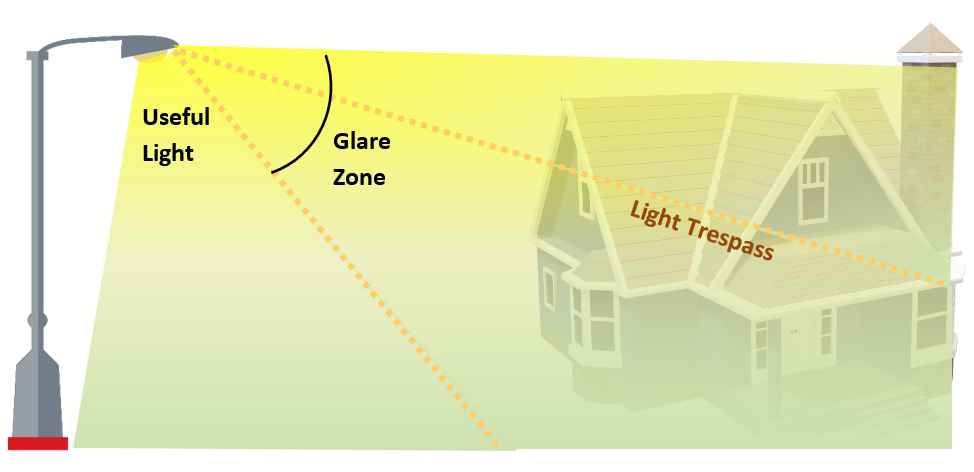Intelligent Street Lighting System for Smart City: 10 Important Points
- By
- Pooja |
- February 01, 2021 |
- Civil Engineering, Road Lighting, Innovation,

Table of Contents
What is Intelligent street lighting system for a smart city?
Why Intelligent and Smart Street Lighting?
Optimum Utilization of Resources:
What is the Internet of Things (IoT) for Street Lighting?
IoT based Controlled System of Intelligent LED Street Lighting
Motion Sensor based Street Lighting:
What is Intelligent street lighting system for a smart city?
Intelligent Street Lighting System involves the design, installation, operation & maintenance of road lights and associated infrastructure to ensure adequate and uniform lighting levels are provided for all road users.
Traditionally streetlights are designed in the old fashion, which means when there is dark, streetlights are turned-on and similarly, when there is a fault in lighting illumination, manual inspection is carried out. But this old system is not effective and efficient to meet future demand & expectations.
Now it’s time to make our Road Lighting Infrastructure intelligent and smart to control it efficiently, use it on demand, optimise the resources and utilise it to its full potential and with minimum carbon footprint to save our environment.
Why Intelligent and Smart Street Lighting?
Intelligent and Smart Street Lighting offers a variety of benefits from energy efficiency to smart control systems. Some of the key reason to choose an Intelligent street Lighting system is below:
Energy Efficiency:
LED lights are diodes that release high-quality light with a superior level of lumen efficacy (90 to 130 Lm/W ) and high lumen outputs. The LED lights alter electrical energy into high efficacy lighting energy with the radiative amalgamation of electrons discharged from a compound layer of semiconductors.
The semiconductor device coupled with LEDs provides long operating life to the Street Lighting system.
Minimum Lighting Trespass:
Lighting Trespass simply means excessive lighting over the areas like residential houses where road lighting may shine on the houses. LED lighting is designed to provide focused lighting where it is needed the most and trespass are minimized to a great extent.
Read More:
- What is Substation & how does Substation work? 6 Important Points
-
30 Most demanding and useful design software for Civil Engineers
Optimum Utilization of Resources:
The lifespan of lighting luminaire, Lighting trespass, protection of Lighting Column from Accidents, On-Demand Lighting, Motion Sensor Lighting is the few key parameters that drive the utilization Index of street Lighting Resources. The Internet of Things (IoT) is here to expedite the process of this optimization and it is high time for industry experts to explore the potential of IoT and optimise the resource utilization to a full extent.
What is the Internet of Things (IoT) for Street Lighting?
LED-based Street Lighting coupled with the Internet of Things (IoT) is an extraordinary combination to enhance road lighting systems. IoT provides digital control to analyse, monitor and transmit information from a controlled system and motion sensor, GPRS. RFID etc helps to improve the efficiency of lighting assets.
IoT helps to control and instruct lighting columns to on, off, dim the light as and when required. It also helps to collect road user information, behaviour predictability, lamp fault detection and vulnerability of columns in a real-time environment. As a result, it helps the system to customise the Lighting infrastructure to suit the local situation and circumstances.
For example, the road lighting requirement around school zones would be far different than a hospital or Highstreet. Similarly, the lighting requirement along an urban motorway is far different from a residential street. This simply means the treatment and maintenance regime of lighting infrastructure must be designed to suit the local requirement and one solution doesn’t fit all situations.
There is an enormous opportunity to explore and adopt IoT for street lighting and make it intelligent and smart.
What is LED Street Lighting?
Light Emitting Diodes (LEDs) are established to be the utmost efficient product for the street lighting system. It helps the government of local authorities to save 50 to 70% of the lighting energy cost in comparison to the traditional lighting system of mercury vapour lamps or sodium lamps.
It provides long life, targeted spotlighting, high efficacy, low CHG emissions, and low carbon footprint. LED Lighting comes with various advantages against conventional lighting:
IoT based Controlled System of Intelligent LED Street Lighting
Please see a detailed description, how LED and intelligent street lighting systems helps to make Street Lighting an outstanding proposition:
Smart Lighting Columns:
Smart Lighting Columns are designed to hold RFID, motion sensors, wireless network, emergency calls, and digital controllers to collect real-time information, data processing, data transmission to the control centres.
Dim Light Profile:
Low-density residential streets or rural motorways or Business Parks may not need full illumination in off-peak hours, but traditional lighting systems do not offer a Dim Light option to minimise energy consumption. IoT based intelligent street lighting systems provide the opportunity to observe, analyse and customise lighting systems to create Dim Light Profile when there is any need and reduce the energy cost.
Lighting on Demand
Lighting on demand is another extremely challenging task to cater to if we don’t have an IoT based Intelligent street lighting system. So, suppose there is an accident that takes place along a motorway or in residential streets. Now, this is an unplanned event and the local area needs well-lit streets to inform other road users to drive slowly and safely and also helps emergency services to perform their duties.
IoT based intelligent street lighting systems not only help to perform the above tasks, but it goes far beyond that and record the damage to the lighting assets caused by the accident and notifies the central database for repair or replacement of those assets.
Motion Sensor based Street Lighting:
Motion sensor-based street lightings are one of the advanced technologies to activate and deactivate road lightings when it senses the presence of a vehicle or pedestrian. It automatically dims and fully lit the luminaire as per requirement. These lights are beneficial when the vehicular traffic or pedestrians are almost nil because, in that situation, it turns off the lights, and when it senses the vehicle, it activates the light.
The sensor can be set to turn on when a vehicle enters to desirable visibility zone, which means a vehicle is 300 meters away and running at 50kph speed, the sensor can be activated with Radar technology so that the vehicle receives adequate visibility all the time.
Key Takeaways
Road Lighting accounts for 35% to 50% of an urban settlement’s energy consumption. This puts tremendous pressure on the government and local authorities. Energy-efficient lighting coupled with IOT based lighting-controlled system can significantly reduce these consumptions and make our street safer and environment friendly.
I hope this blog will help you understand the Intelligent Street lighting system and its associated features.
Please feel free to like, share and comment.
Admin, gcelab.com Please see our Pillar Post to know why we founded gcelab.com.
Read More:
- Schedule of Work in Construction Contract: 5 Important Points
-
Preamble and Preliminaries in Construction Contract- 5 Important Points

Pooja
Founder at gcelab.com, Pooja is an Entrepreneur unlocking human potential. Working in the Principles of Lean Start-up, Pooja believes in Transparency and User Happiness the most. Pooja’s background in teaching gives her a sophisticated grasp on even the most tedious aspect of course building. She is passionate about people who believe that good is not enough.



